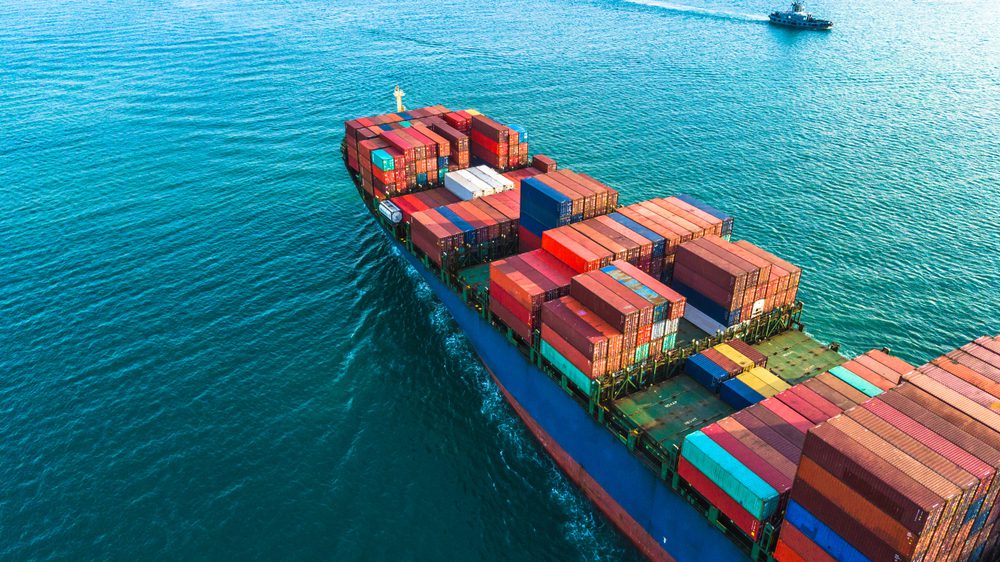U.S. Customs Revenue Tops $100 Billion for First Time Amid Tariff Surge
US revenue from customs duties this fiscal year surpassed $100 billion for the first time, reflecting higher tariffs imposed by the Trump administration.


By John Kemp
LONDON, Oct 19 (Reuters) – Global freight volumes have begun to fall as overall consumer and business spending slows and the composition rotates from merchandise back to services after the pandemic.
Slower growth in freight and manufacturing will ease pressure on supply chains and commodity markets, taking some heat out of inflation, currently running at the fastest rate for 40 years.
The slowdown is a necessary part of the rebalancing process after exceptionally rapid growth in merchandise trade and output in the second half of 2020 and throughout 2021.
It will eventually dampen consumption of middle distillates such as diesel and gas oil, allowing severely depleted inventories to be rebuilt and fuel prices to fall back.
But it also threatens to spill over into the services sector, which employs many more workers, which would transform a mild economic slowdown into a much deeper and more prolonged one.
Most measures of container freight and manufacturing activity appear to have reached a cyclical peak in the final quarter of 2021 or the first quarter of 2022 and been gently declining since then:
In late 2021 and early 2022, manufacturers and distributors over-ordered raw materials, semi-finished items and finished products to avoid a repeat of last year’s supply disruptions.
But they have been left trying to reduce excess inventories by cutting new orders after household and business spending on merchandise slowed in 2022.
The slowdown in maritime cargo has caused container shipping lines to cancel sailings to reduce capacity and limit downward pressure on freight rates.
Even so, China’s container shipping index, a composite measure of the cost of sending cargo by sea, has fallen by 43% since the end of January, though costs are still more than double compared with October 2019, before the pandemic.
Chartbook: Global freight and manufacturing activity
The slowdown will gradually unblock supply chains and ease some of the intense upward pressure on merchandise prices that has occurred since mid-2020.
Manufacturing production has started to fall in many of the advanced economies:
As growth in output, employment and incomes slow in the advanced economies, their merchandise demand is likely to decelerate further in the remainder of 2022 and well into 2023.
The World Trade Organization forecasts merchandise trade will increase by just 1.0% in 2023 after rising 3.5% in 2022 (“Trade growth to slow sharply in 2023”, WTO, Oct. 5).
The forecast growth in world merchandise trade volumes next year would be among the slowest rates in the last 40 years.
Slower volume growth only occurred during the U.S./China trade war in 2019 and U.S. recessions in 2020, 2009 and 2001.
Even that forecast may prove optimistic, however, as global central banks raise the cost of borrowing at the fastest rate since the early 1980s.
The slowdown in industrial output and freight has already been underway for at least the last 3-6 months in most countries. In time, it will ease some of the pressure on the supply of middle distillates and goods inflation.
The critical question is how far and how long the economy will have to slow to rebuild distillate stocks to more comfortable levels and bring inflationary pressures under control.
(Editing by Peter Graff)
(c) Copyright Thomson Reuters 2022.
Sign up for gCaptain’s newsletter and never miss an update

Subscribe to gCaptain Daily and stay informed with the latest global maritime and offshore news


Stay informed with the latest maritime and offshore news, delivered daily straight to your inbox
Essential news coupled with the finest maritime content sourced from across the globe.
Sign Up